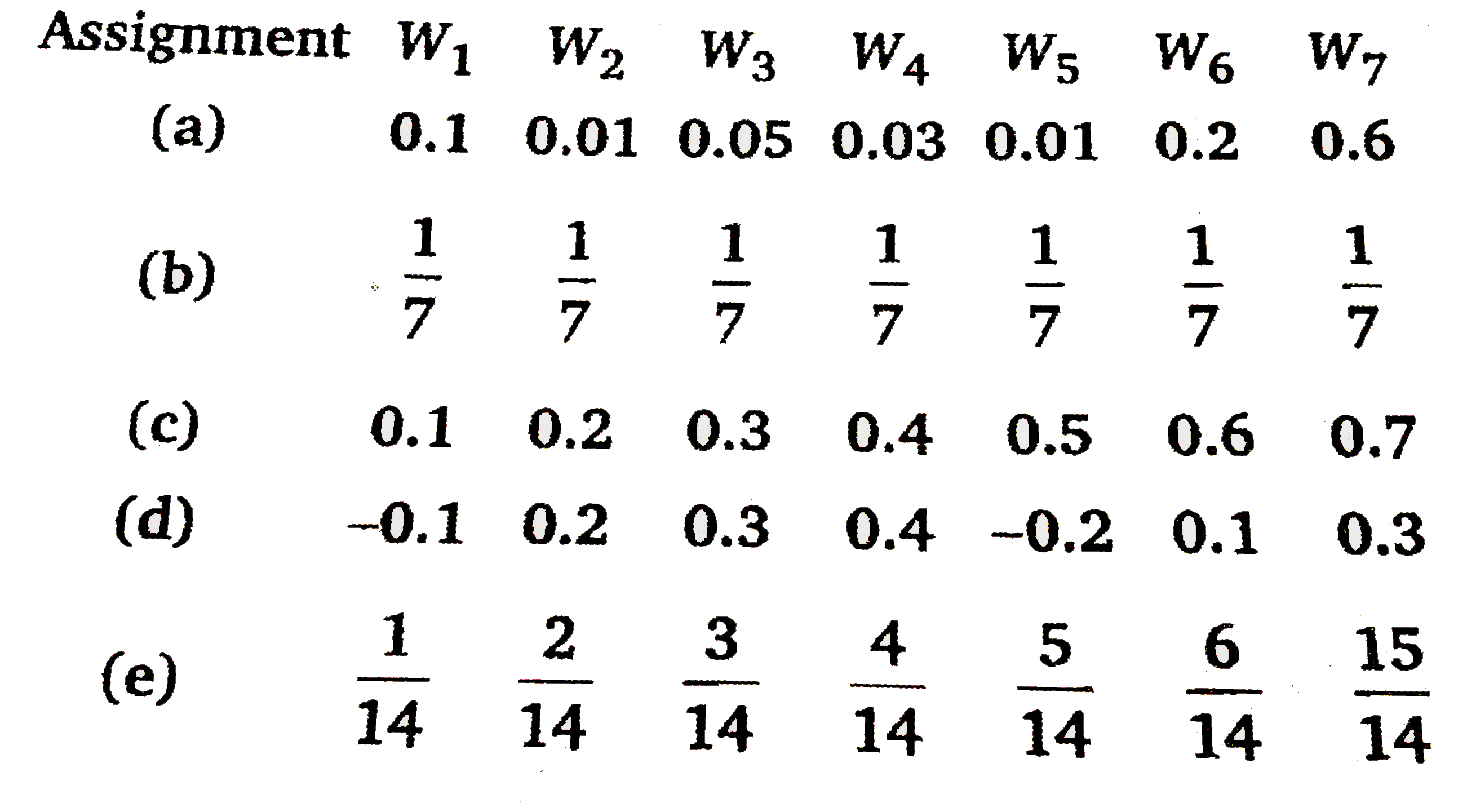Given two events A and B . If odds against A are as 2:1 and those in favour of A∪B are 3:1, then find the range of P(B).Solution in Bengali
Clearly P(A) = 1/3, P(A∪B)=3/4. Now,
P(B)≤P(A∪B)
⇒P(B)≤3/4 (1)
Also, P(B) = P(A∪B)−P(A)+P(A∩B)≥34−13=512 Hence, 512≤P(B)≤34
Topper's Solved these Questions
- PROBABILITY I BOOK - CENGAGE PUBLICATIONCHAPTER - PROBABILITY I EXERCISE - Solved Example
9 Videos
- PROBABILITY I BOOK - CENGAGE PUBLICATIONCHAPTER - PROBABILITY I EXERCISE - Exercise 9.1
6 Videos
- PROBABILITYBOOK - CENGAGE PUBLICATIONCHAPTER - PROBABILITYEXERCISE - All Questions
470 Videos
- PROBABILITY IIBOOK - CENGAGE PUBLICATIONCHAPTER - PROBABILITY IIEXERCISE - MULTIPLE CORRECT ANSWER TYPE
6 Videos
Similar Questions
When a fair dice is rolled, the number that comes up top is a number between one to six. Assuming we roll the dice once, to check the possibility of three coming up.
View SolutionWhich of the following cannot be valid assignment of probabilities for outcomes of sample space S={W1,W2,W3,W4,W5,W6,W7}

View SolutionA coin is tossed three times, consider the following events. A : ‘No head appears’, B: ‘Exactly one head appears’ and C: ‘Atleast two appear’. Do they form a set of mutually exclusive and exhaustive events?
View SolutionLet EandF be two independent events. The probability that exactly one of them occurs is 1125 and the probability if none of them occurring is 225. If P(T) denotes the probability of occurrence of the event T, then (a) P(E)=45,P(F)=35 (b) P(E)=15,P(F)=25 (c) P(E)=25,P(F)=15 (d) P(E)=35,P(F)=45
View SolutionGiven two events A and B . If odds against A are as 2:1 and those in favour of A∪B are 3:1, then find the range of P(B).
View SolutionGiven two events AandB. If odds against A are as 2:1 and those in favour of A∪B are as 3:1, then a.1/2≤P(B)≤3/4 b. 5/12≤P(B)≤3/4 c. 1/4≤P(B)≤3/5 d. none of these
View SolutionFor two mutually exclusive events A and B , P(A)=13 and P(B)=14, find (A∪B).
View SolutionA and B are two events such that odds odds against A are 2 : 1 odds in favour of A∪B are 3 : 1. If x≤P(B)≤y, then the ordered pair (x, y) is
View SolutionGiven two events A and B. If odds against A are 2 : 1 and those in fovour of A∪B are as 3 : 1, then
View SolutionIf A,B and C are mutually exclusive and exhaustive events such that P(B)=32P(A) and P(C)=13P(B). Find odds in favour of (A∪B)
View SolutionGiven two events A and B . If odds against A are as 2:1 and those in favour of A∪B are 3:1, then find the range of P(B).
View SolutionGiven two events AandB. If odds against A are as 2:1 and those in favour of A∪B are as 3:1, then a.1/2≤P(B)≤3/4 b. 5/12≤P(B)≤3/4 c. 1/4≤P(B)≤3/5 d. none of these
View SolutionGiven two events AandB . If odds against A are as 2:1 and those in favour of A∪B are 3:1, then find the range of P(B).
View SolutionIf A and B be two events such that P(A)=1/4, P(B)=1/3 and P(A∪B)=1/2 show that A and B are independent events.
View Solutionदो घटनाएं A तथा B हैं। यदि A के प्रतिकूल संयोगानुप!त 2:1 हैं तथा A∪B के अनुकूल संयोगानुपात 3:1 है तब P(B) का परिसर ज्ञात कीजिए।
View SolutionConsider two events such that P(A)=12, P(A∪B)=35and P(B)=P. Find P, if A and B are independent events
View Solution
